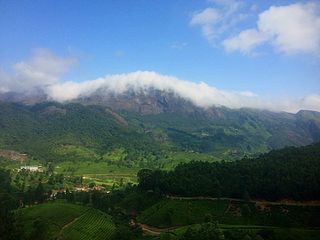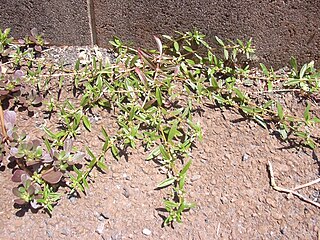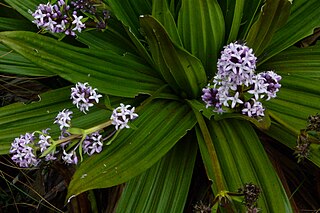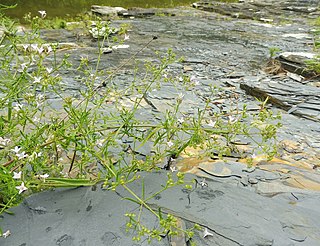
The Western Ghats, also known as the Sahyadri mountain range, is a mountain range that covers an area of 160,000 km2 (62,000 sq mi) in a stretch of 1,600 km (990 mi) parallel to the western coast of the Indian peninsula, traversing the states of Gujarat, Maharashtra, Goa, Karnataka, Kerala and Tamil Nadu. It is a UNESCO World Heritage Site and is one of the 36 biodiversity hotspots in the world. It is sometimes called the Great Escarpment of India. It contains a very large proportion of the country's flora and fauna, many of which are endemic to this region. According to UNESCO, the Western Ghats are older than the Himalayas. They influence Indian monsoon weather patterns by intercepting the rain-laden monsoon winds that sweep in from the south-west during late summer. The range runs north to south along the western edge of the Deccan Plateau and separates the plateau from a narrow coastal plain called the Western Coastal Plains along the Arabian Sea. A total of 39 areas in the Western Ghats, including national parks, wildlife sanctuaries and reserve forests, were designated as world heritage sites in 2012 – twenty in Kerala, ten in Karnataka, six in Tamil Nadu and four in Maharashtra.
Colonel Richard Henry Beddome was a British military officer and naturalist in India, who became chief conservator of the Madras Forest Department. In the mid-19th century, he extensively surveyed several remote and then-unexplored hill ranges in Sri Lanka and south India, including those in the Eastern Ghats such as Yelandur, Kollegal, Shevaroy Hills, Yelagiri, Nallamala Hills, Visakhapatnam hills, and the Western Ghats such as Nilgiri hills, Anaimalai hills, Agasthyamalai Hills and Kudremukh. He described many species of plants, amphibians, and reptiles from southern India and Sri Lanka, and several species from this region described by others bear his name.

Madhav Dhananjaya Gadgil is an Indian ecologist, academic, writer, columnist and the founder of the Centre for Ecological Sciences, a research forum under the aegis of the Indian Institute of Science. He is a former member of the Scientific Advisory Council to the Prime Minister of India and the Head of the Western Ghats Ecology Expert Panel (WGEEP) of 2010, popularly known as the Gadgil Commission.

Chandoli National Park is a national park established in Sangli district on May 2004. Earlier it was a Wildlife Sanctuary declared in 1985. Chandoli Park is notable as the southern portion of the Sahyadri Tiger Reserve, with Koyna Wildlife Sanctuary forming the northern part of the reserve

Oldenlandia is a genus of flowering plants in the family Rubiaceae. It is pantropical in distribution and has about 240 species. The type species for the genus is Oldenlandia corymbosa.

Scleromitrion diffusum, synonyms including Hedyotis diffusa, is a species of flowering plant in the family Rubiaceae. It is a herb used in traditional Chinese medicine, known as Chinese: 白花蛇舌草; pinyin: báihuā shéshécǎo; lit. 'white flower snake-tongue grass', sometimes abbreviated to 蛇舌草 shéshécǎo. It is sometimes combined with Siraitia grosvenorii and Scutellaria barbata to make hot drinks like lohoguo of guongsei or luohanguo pearl and sheshecao beverage.
Hedyotis (starviolet) is a genus of flowering plants in the family Rubiaceae. Many species of this genus such as Hedyotis biflora, H. corymbosa and H. diffusa are well known medicinal plants. Hedyotis is native to tropical and subtropical Asia and to islands of the northwest Pacific. It comprises about 115 species. The type species for the genus is Hedyotis fruticosa.

Kadua is a genus of flowering plants in the family Rubiaceae. It comprises 29 species, all restricted to Polynesia. Twenty-two of these are endemic to the Hawaiian Islands. Some of the species are common at high elevation. Others are single-island endemics or very rare, and a few are probably extinct. Kadua affinis is widely distributed in Hawaii and is polymorphic. The type species for the genus is Kadua acuminata.

Sathyabhama Das Biju is an Indian amphibian biologist, wildlife conservationist and heads the Systematics Lab at the University of Delhi, Department of Environmental Studies. He is dubbed as the "Frogman of India" by media for his passion for frogs and for bringing fresh fascination for Indian amphibians. In an interview with Sanctuary Asia, he was introduced as "one of the world's foremost amphibian experts".
Amphistemon is a genus of 2 species of flowering plants in the family Rubiaceae. It is described by Inge Groeninckx in 2010 based on a molecular analysis of the Hedyotis-Oldenlandia group. The genus name is based on the Greek 'amphi-' and 'stemon' (=stamen) referring to the dimorphic stamen position characteristic for this genus.

Raorchestes is a genus of frogs in the subfamily Rhacophorinae that are found in mountainous regions of South Asia, Southeast Asia, and southern China. A recent study places Raorchestes as a sister taxon of Pseudophilautus. Before the description of the genus in 2010, species now in Raorchestes had been assigned to genera Ixalus, Philautus, and Pseudophilautus.

Hedyotis verticillaris is a plant belonging to the family Rubiaceae that is endemic to the higher altitude grasslands of the Nilgiris in southern India. Unlike many others members of the genus the stems of this species are underground and the leaves appear close to the ground forming rosettes and usually hold some water at the centre of the whorl of leaves. The flowers are produced on a stalk.
Carterella is a monotypic genus of flowering plants in the family Rubiaceae. The genus contains only one species, viz. Carterella alexanderae, which is endemic to Baja California Sur in Mexico. It grows on steep slopes in the mountains.
Houstonia ouachitana, the Ouachita bluet, is a species of plants in the coffee family. It is endemic to the Ouachita Mountains of Arkansas and Oklahoma. It is an herb up to 20 cm tall, with lanceloate basal leaves and narrowly linear cauline leaves.

Houstonia micrantha, the southern bluet, is a plant species in the coffee family.

Spermacoceae is a tribe of flowering plants in the family Rubiaceae and contains about 1346 species in 57 genera. Its representatives are found in the tropics and subtropics.
Involucrella is a genus of flowering plants in the family Rubiaceae. The genus is found from Northeast India to Hainan and Peninsular Malaysia and the Philippines.
Oldenlandia vasudevanii is a rare plant species in the family Rubiaceae which is found in Karassury region of the Nelliampathi hills in Kerala, India.

Stenaria is a genus of flowering plants in the family Rubiaceae. It is a small genus, consisting of around six species native to the United States, Mexico, and The Bahamas. All species of Stenaria are restricted to Mexico and the southwestern United States, except for the wide-ranging Stenaria nigricans which extends northward and eastward.











